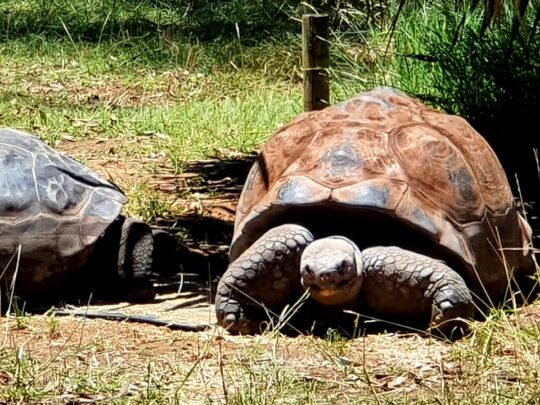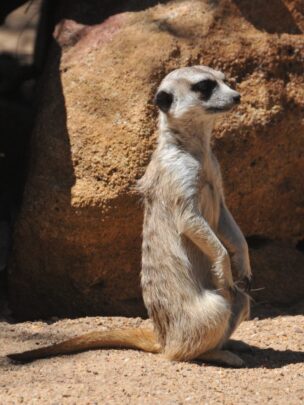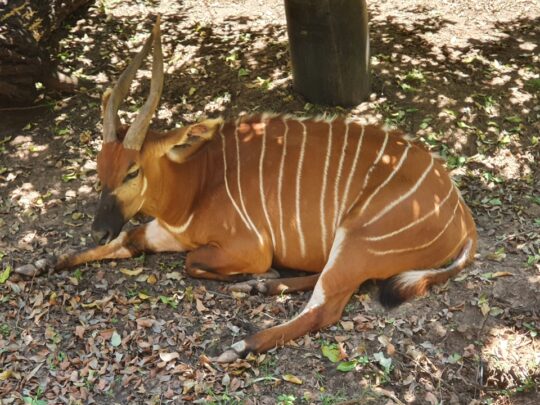
It’s a huge problem, the duckweed that is. For those who are not familiar it’s that lovely layer of green that sometimes spreads across ponds. Trouble is, it encourages anaerobic bacteria as well and the whole system has the potential to disintegrate. Pretty much all other life is discouraged or goes somewhere else. It can be easily controlled using herbicides though; except I’m at Taronga’s Western Plains Zoo in Dubbo, New South Wales and that’s a no-no for animal life.
Its proliferation to such an extent has not been seen before here and, serenaded by the gibbons who go back and forth on overhead ropes, it shows no signs of stopping so they’ve cordoned off half of the pondage and a truck will soon arrive to dispose of that section, presumably by suction and filtration.
However, the lady who works there explained to me the real reason they had to take action and I couldn’t help but laugh as my imagination ran riot. The possibility of some overactive child going for a run along the grassy bank and then heading off onto a beautifully manicured lawn only to find there is no support and they’re suddenly all wet was too much to bear. The potentially awful consequences are cast aside as I imagine a screaming child, arms flailing, as he/she has just found themselves immersed in a significant body of water — surprise! You’re not Jesus after all and that wasn’t a lawn you just stepped on.

The duckweed is somewhat overshadowed by the siamangs (the largest type of gibbon) as their howling, which can be heard 3 kilometres away in a rainforest, belts out across the lake, never failing to attract an audience. Just as impressive is their ability to swing rapidly across on rope or branches with a grace only matched by Olympic class gymnasts. It’s always my most remembered experience of Dubbo’s Western Plains Zoo.
Of course, just inside the entrance is everyone’s second favourite animal whose presence is accompanied by the squeals of prepubescent females as they see live meerkats, mostly for the first time in their lives.
“Oh, they’re so cute”, is uttered a hundred times every hour, and who am I to deny the attraction of those sad bulging penetrating eyes.

One of my other favourites is the lemurs, made more famous via the cinema. However, partially due to the layout of the zoo, they seem to hardly attract anyone, as I found out the second day when I sat waiting for photo opportunities for about 30 minutes. The sight of their outrageously striped prehensile tails riding high above the tall grasses is something to behold.
The distance of the 6km loop round the zoo can easily be doubled utilising all the side tracks that spray off the main thoroughfare, allowing you to see the odd and rare beasts, such as all types of rhinos (five), something few places on the planet can claim to have. I was rivetted by the sight of the largest of all, the greater one-horned rhino (India) moving slowly through the water, where they spend much of their time avoiding insects.

The only wild horses left in the world, known as Takhi (meaning ‘spirit’ or ‘spiritual’) are just one of the other rarities on view.
The bongo’s stripes may not be as many as the zebras, but they have a beauty unmatched in the list of deer species and their long horns add even more allure. There are lots of other unique four-legged creatures hat the zoo, all worth a look, even if you have to strain your neck to see the giraffes feeding or spend time hoping you can see the Galapagos tortoises move.

Still, the zoo has much to offer and the animals have a bit more room to move than at Sydney’s Taronga Zoo so it’s an interesting day out.